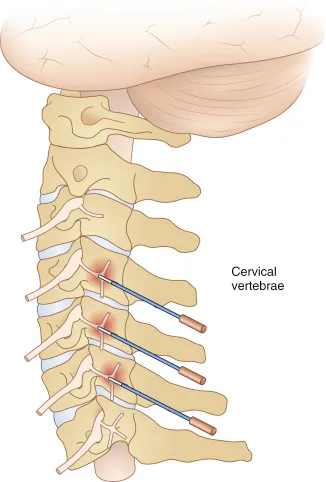 What is Cervical Facet Arthropathy:
What is Cervical Facet Arthropathy:
Cervical facet arthropathy, also known as facet joint osteoarthritis, is a degenerative condition that affects the facet joints in the cervical spine, which is the upper part of the spine encompassing the neck. Facet joints are small, paired joints located between the vertebrae of the spine. These joints facilitate smooth movement and provide stability to the spine.
Cervical facet arthropathy occurs when the cartilage in the facet joints gradually deteriorates over time. As the cartilage wears away, the bones can come into direct contact, leading to pain, inflammation, and reduced mobility in the neck.
Causes of Cervical Facet Arthropathy:
- Aging: Like other joints in the body, the facet joints can undergo degenerative changes with age.
- Injury: Trauma to the neck, such as whiplash from a car accident, can contribute to the development of cervical facet arthropathy.
- Genetics: Some individuals may be predisposed to joint problems due to genetic factors.
- Repetitive Stress: Activities or occupations that involve repetitive stress on the neck, such as heavy lifting or constant neck movement, may contribute to the condition.
- Aging: Like other joints in the body, the facet joints undergo wear and tear over time, and the risk of developing arthropathy increases with age.
- Trauma: Previous injuries to the neck, such as whiplash or other forms of trauma, can contribute to the degeneration of the facet joints.
- Genetics: Some individuals may be genetically predisposed to joint problems, including cervical facet arthropathy.
The symptoms of cervical facet arthropathy can vary but often include:
- Neck pain: Persistent or intermittent discomfort in the neck.
- Stiffness: Reduced range of motion and stiffness in the neck.
- Headaches: Chronic headaches that may originate from the neck.
- Tenderness: Sensitivity or tenderness over the affected facet joints.
- Radiating pain: Pain may radiate into the shoulders or upper back.
Diagnosis typically involves a combination of a physical examination, imaging tests (such as X-rays, CT scans, or MRI), and a review of the patient’s medical history.
Treatment options for cervical facet arthropathy aim to alleviate pain, improve function, and slow down the progression of joint degeneration. Conservative approaches may include medications (such as pain relievers and anti-inflammatory drugs), physical therapy, and lifestyle modifications. In some cases, more invasive interventions such as facet joint injections or radiofrequency ablation may be considered. Surgical options are typically reserved for severe cases that do not respond to conservative treatments.
If you suspect you have cervical facet arthropathy or are experiencing persistent neck pain, it is essential to consult with a healthcare professional for an accurate diagnosis and appropriate management plan tailored to your specific needs.
